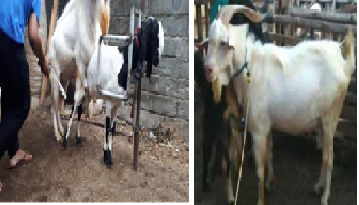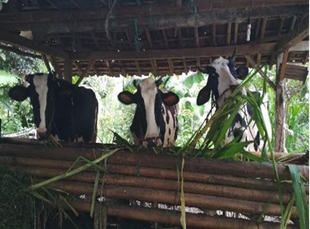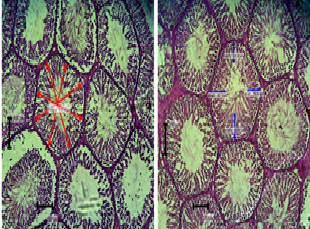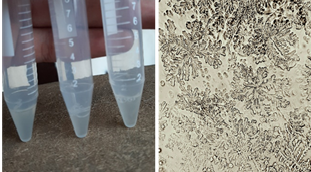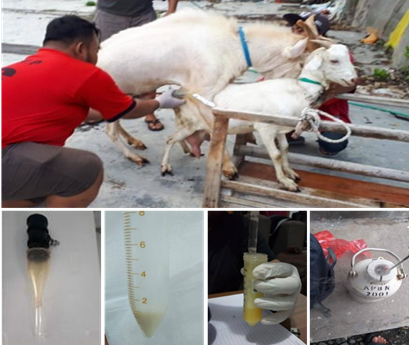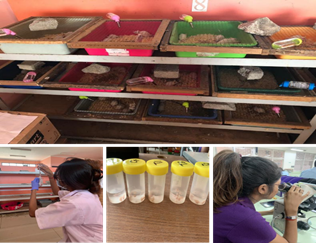PENGARUH PENEMBAKAN LASERPUNKTUR PADA TITIK REPRODUKSI ITIK CAMPBELL (Anas platyrhynchos domesticus) BETINA TERHADAP PRODUKTIVITAS TELUR
Downloads
Adikara, R.T.S. 2014. Teknologi Laserpunktur pada Ternak [Diktat]. Fakultas Kedokteran Hewan. Universitas Airlangga. Surabaya. 5-66. Adikara, RTS. 2001. Teknologi Laserpunktur Pada Ternak. Pusat Penelitian Bioenergi. LKPM Universitas Airlangga. 7-23. Atmadjaja. 2003. Beternak Itik Hibrida Unggul. Penebar Swadaya. Bandung. 12-18. Binawati, D. K dan D. Fatmawati. 2005. Pengaruh Penembakan Laser Terhadap Produksi Telur Dan Berat Lemak Abdominal Ayam Arab, J of Science. 1(1):17 – 21. Hafez, E. S. E., and B. Hafez. 2000. Folliculogenesis, Egg Maturation, Ovulation. In Reproduction in Farm Animal. 7th Edition. Lea and Febiger. Philadelphia. Chapter 5. 68. Hafez, E. S. E. 2000. Reproduction in Farm Animals. 7th Ed. Lea & Febiger. Philadelphia. 385-393. Hardjatno, T. 2001. Dasar-dasar Laserpunktur. Seminar Persatuan Akupunkturis Seluruh Indonesia (PAKSI) 9 – 10 Juni 2001. Jakarta. Hardjosworo, P.S dan Rukmiasih. 2000. Meningkatkan Produksi Daging Unggas. Penebar Swadaya, Anggota IKAPI. Jakarta. 15-35. Herdis. 2005. Optimalisasi Inseminasi Buatan Melalui Aplikasi Teknologi Laserpunktur pada Domba Garut (Ovis aries). Disertasi. Bogor: Sekolah Pascasarjana, Institut Pertanian Bogor. 25-39.Idayatih, T. R. 2014. Potensi Teknologi Laserpunktur Helium Neon Terhadap Berat Badan dan Pertambahan Berat Badan Per Minggu Itik Pejantan Madura [Skripsi]. Fakultas Kedokteran Hewan. Universitas Airlangga. Ismoyowati, T., J.P. Yuwanta., H. Sidadolog dan S. Keman. 2006. Hubungan Antara Karateristik Morofologi Dan Performans Reproduksi Itik Tegal Sebagai Dasar Seleksi. Fakultas Peternakan Universitas Gadjah Mada, Yogyakarta. 152-156. Saputra, K. 2000. Akupunktur Dalam Pendekatan Ilmu Kedokteran. Airlangga University Press. Surabaya. 8-38.
Ovozoa by Unair is licensed under a Creative Commons Attribution-ShareAlike 4.0 International License.
1. The journal allows the author to hold the copyright of the article without restrictions.
2. The journal allows the author(s) to retain publishing rights without restrictions
3. The legal formal aspect of journal publication accessibility refers to Creative Commons Attribution Share-Alike (CC BY-SA).
4. The Creative Commons Attribution Share-Alike (CC BY-SA) license allows re-distribution and re-use of a licensed work on the conditions that the creator is appropriately credited and that any derivative work is made available under "the same, similar or a compatible license”. Other than the conditions mentioned above, the editorial board is not responsible for copyright violation.





























